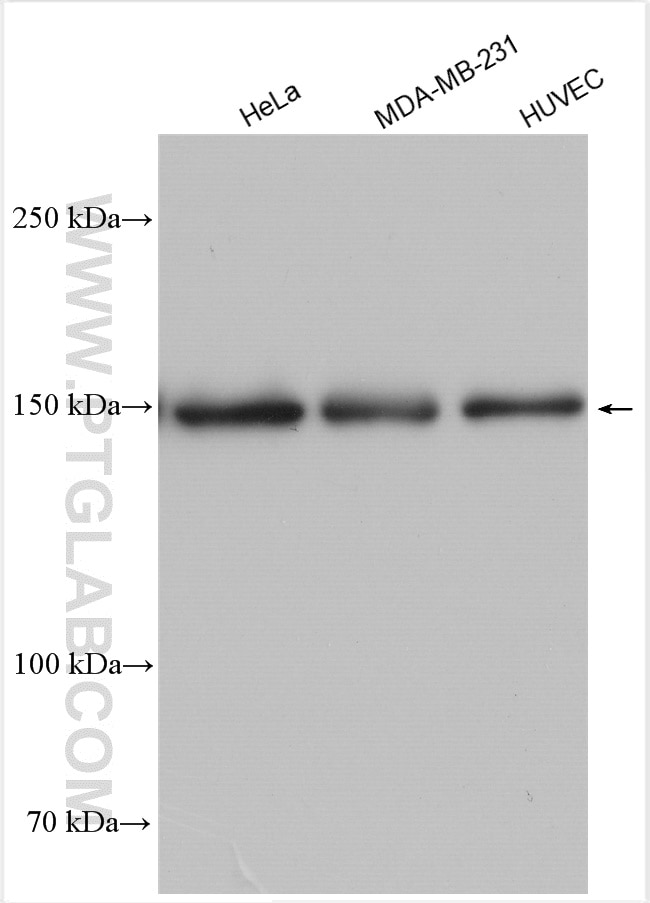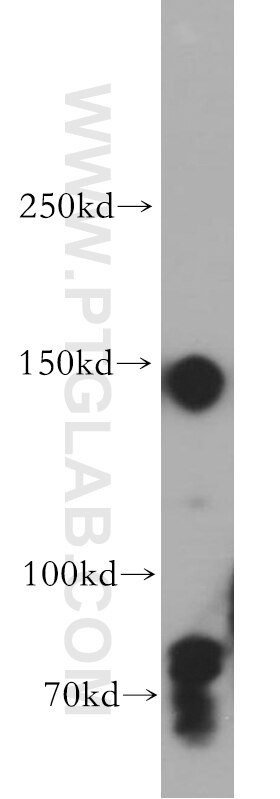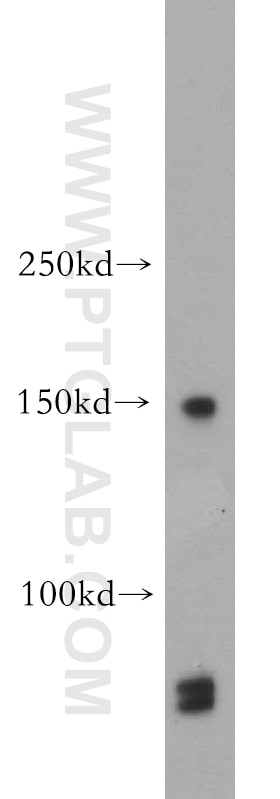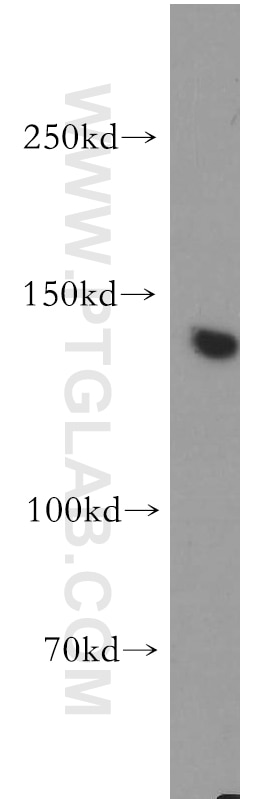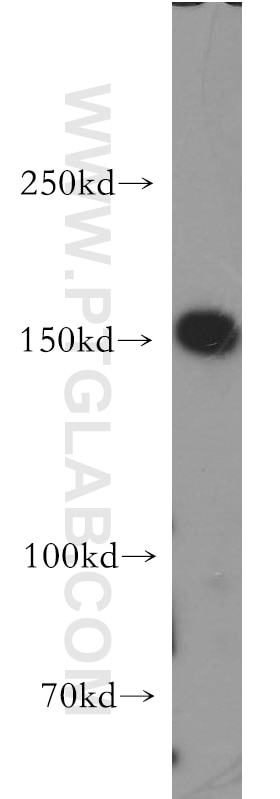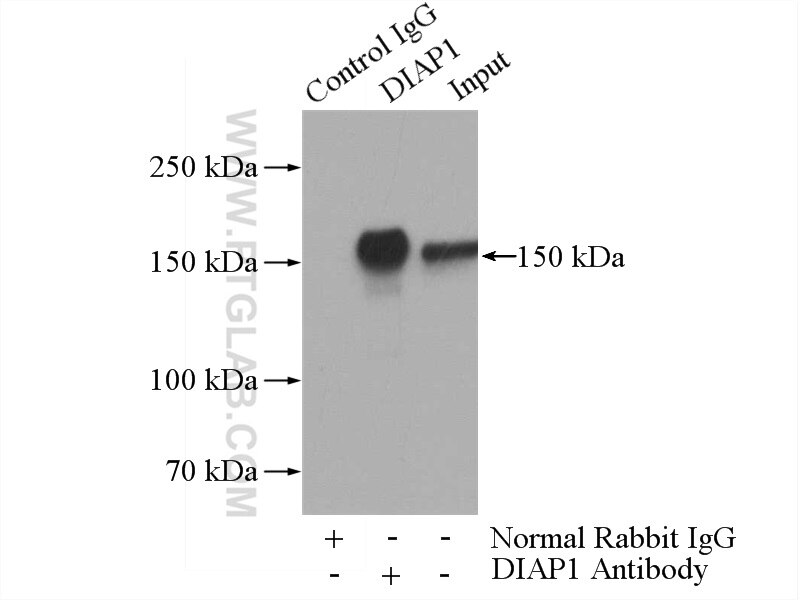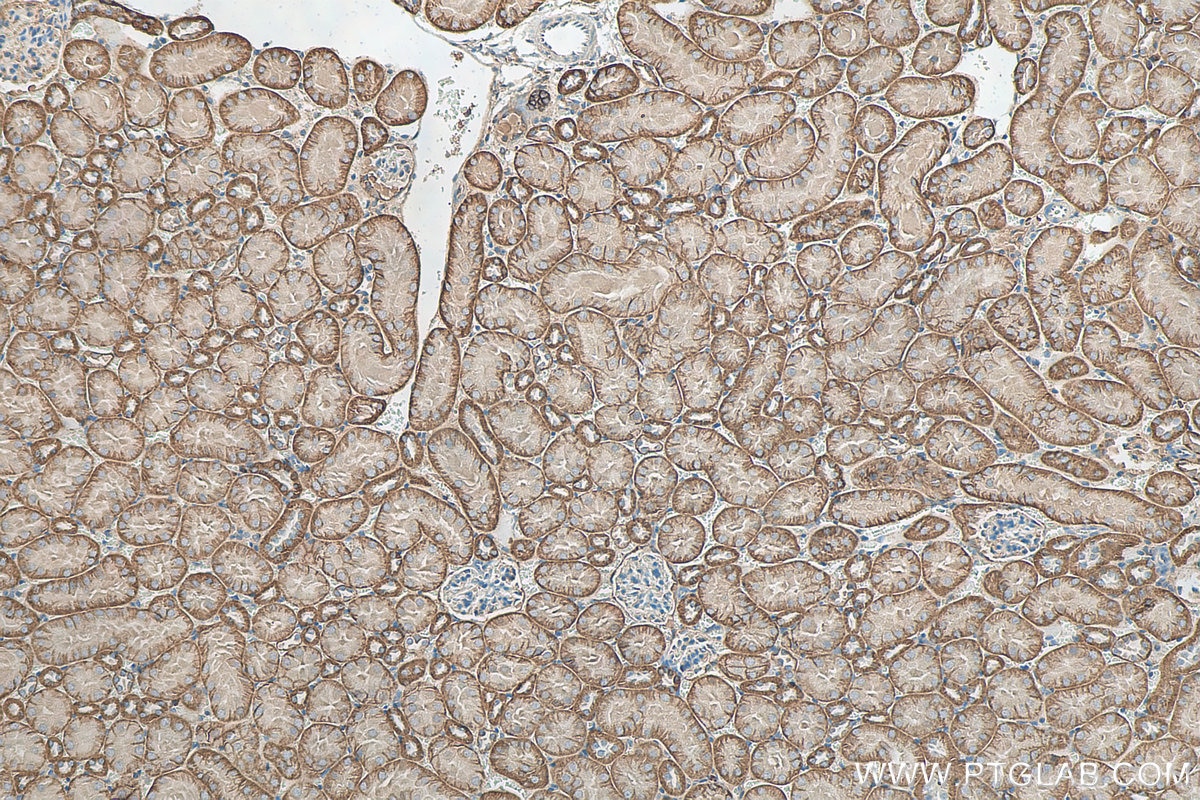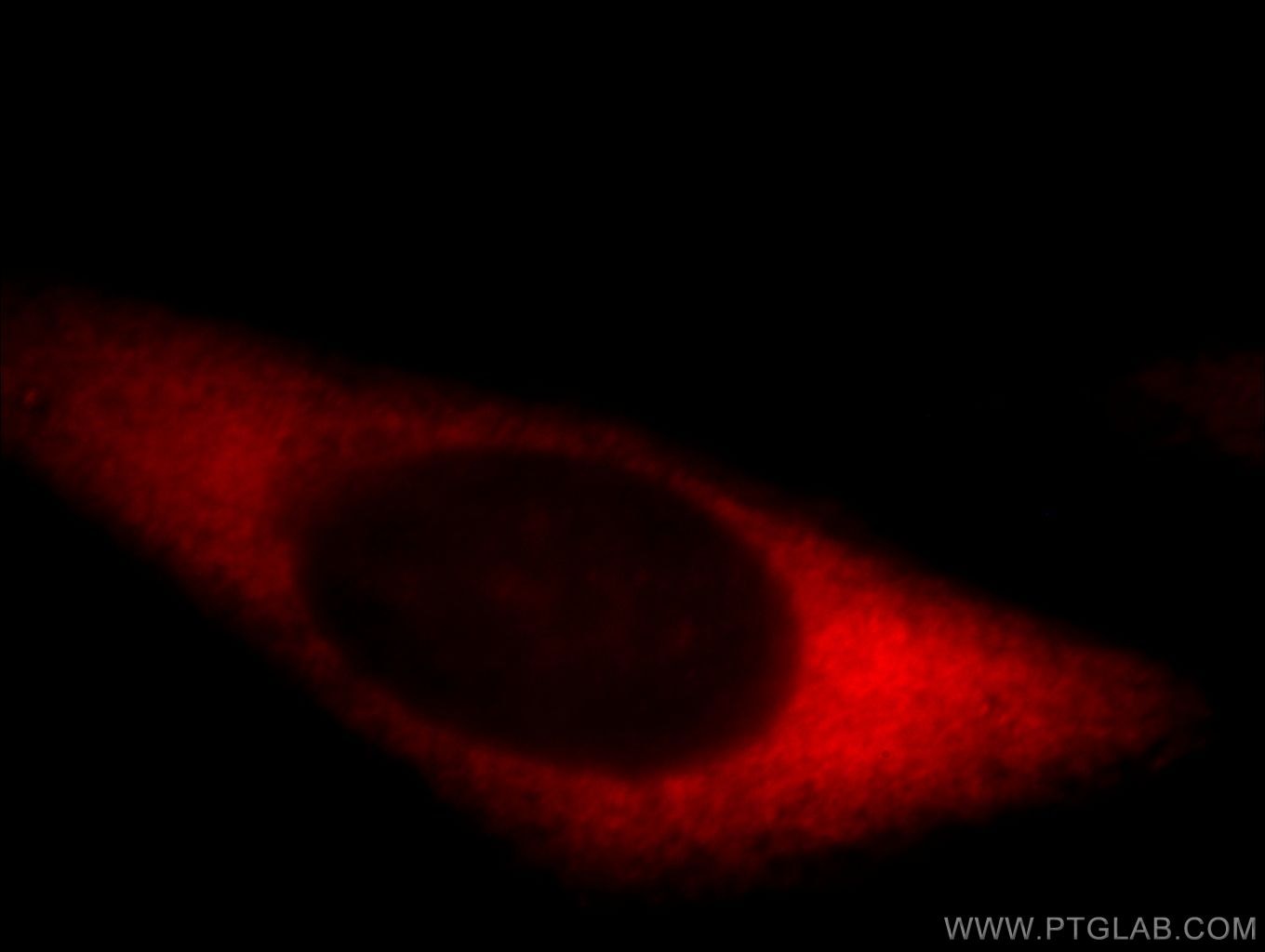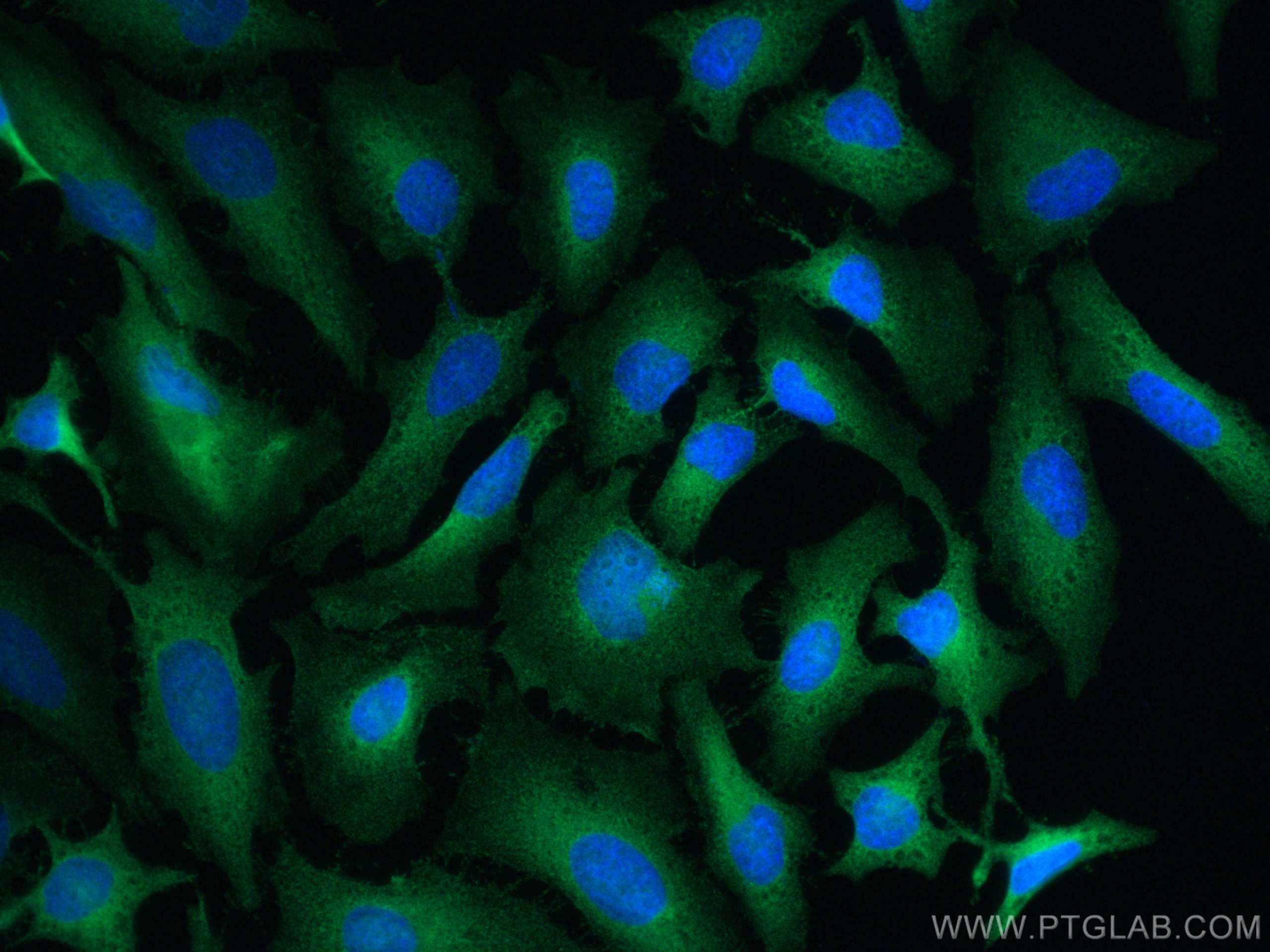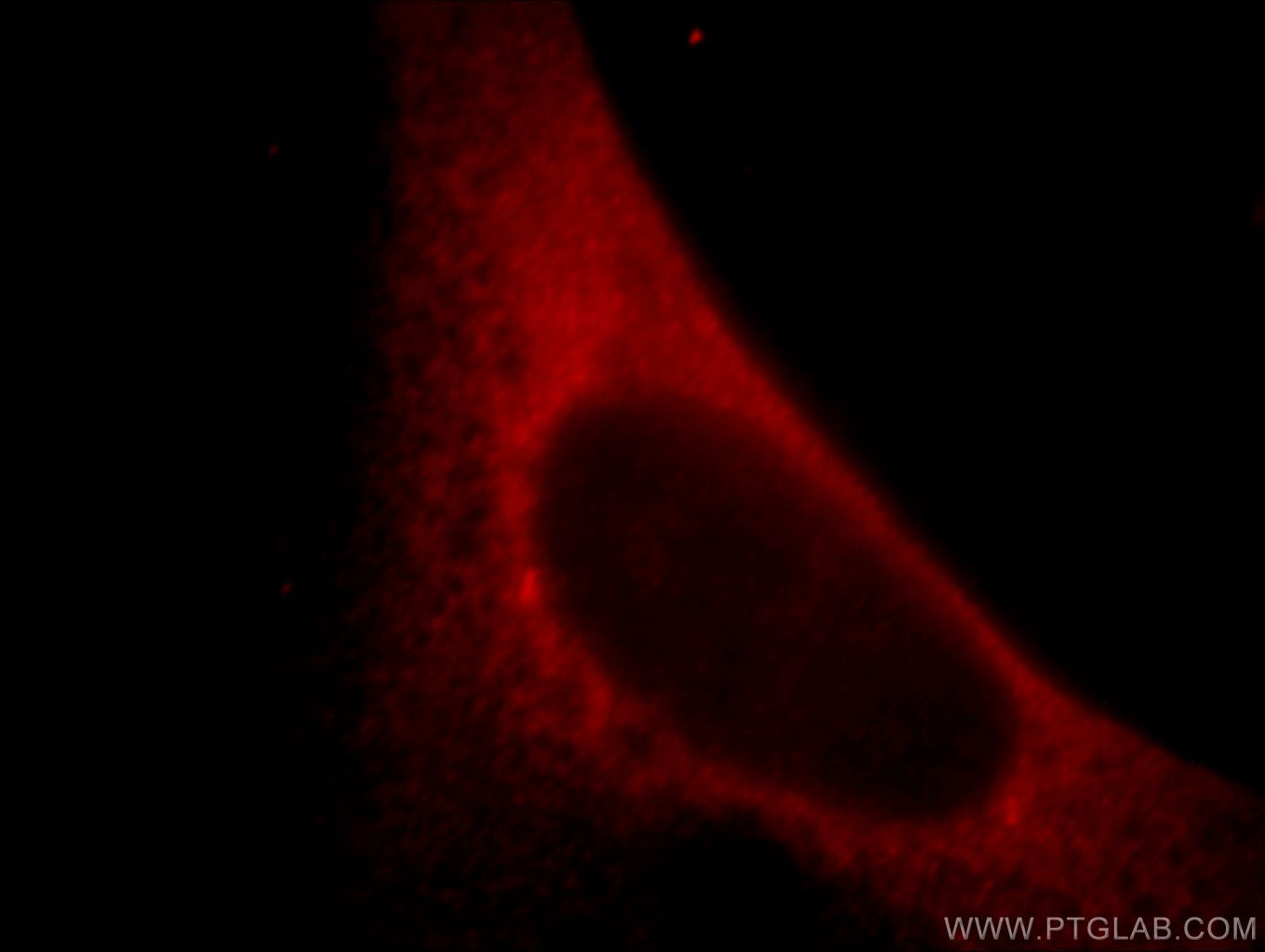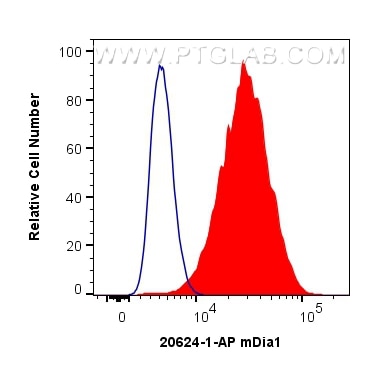- Phare
- Validé par KD/KO
Anticorps Polyclonal de lapin anti-mDia1
mDia1 Polyclonal Antibody for WB, IP, IF, IHC, ELISA, FC (Intra)
Hôte / Isotype
Lapin / IgG
Réactivité testée
Humain, rat, singe, souris
Applications
WB, IHC, IF/ICC, FC (Intra), IP, ChIP, ELISA
Conjugaison
Non conjugué
N° de cat : 20624-1-AP
Synonymes
Galerie de données de validation
Applications testées
| Résultats positifs en WB | cellules HeLa, cellules COS-7, cellules HUVEC, cellules MDA-MB-231, cellules NIH/3T3, tissu cardiaque humain, tissu de muscle squelettique humain |
| Résultats positifs en IP | cellules HeLa |
| Résultats positifs en IHC | tissu rénal de souris, il est suggéré de démasquer l'antigène avec un tampon de TE buffer pH 9.0; (*) À défaut, 'le démasquage de l'antigène peut être 'effectué avec un tampon citrate pH 6,0. |
| Résultats positifs en IF/ICC | cellules HeLa, cellules HepG2 |
| Résultats positifs en FC (Intra) | cellules HeLa |
| Résultats positifs en cytométrie | cellules HeLa |
Dilution recommandée
| Application | Dilution |
|---|---|
| Western Blot (WB) | WB : 1:1000-1:8000 |
| Immunoprécipitation (IP) | IP : 0.5-4.0 ug for 1.0-3.0 mg of total protein lysate |
| Immunohistochimie (IHC) | IHC : 1:50-1:500 |
| Immunofluorescence (IF)/ICC | IF/ICC : 1:50-1:500 |
| Flow Cytometry (FC) (INTRA) | FC (INTRA) : 0.40 ug per 10^6 cells in a 100 µl suspension |
| Flow Cytometry (FC) | FC : 0.40 ug per 10^6 cells in a 100 µl suspension |
| It is recommended that this reagent should be titrated in each testing system to obtain optimal results. | |
| Sample-dependent, check data in validation data gallery | |
Applications publiées
| KD/KO | See 5 publications below |
| WB | See 15 publications below |
| IHC | See 3 publications below |
| IF | See 8 publications below |
| ChIP | See 1 publications below |
Informations sur le produit
20624-1-AP cible mDia1 dans les applications de WB, IHC, IF/ICC, FC (Intra), IP, ChIP, ELISA et montre une réactivité avec des échantillons Humain, rat, singe, souris
| Réactivité | Humain, rat, singe, souris |
| Réactivité citée | Humain, souris |
| Hôte / Isotype | Lapin / IgG |
| Clonalité | Polyclonal |
| Type | Anticorps |
| Immunogène | mDia1 Protéine recombinante Ag14523 |
| Nom complet | diaphanous homolog 1 (Drosophila) |
| Masse moléculaire calculée | 1272 aa, 141 kDa |
| Poids moléculaire observé | 140-150 kDa, 70 kDa |
| Numéro d’acquisition GenBank | BC007411 |
| Symbole du gène | mDia1 |
| Identification du gène (NCBI) | 1729 |
| Conjugaison | Non conjugué |
| Forme | Liquide |
| Méthode de purification | Purification par affinité contre l'antigène |
| Tampon de stockage | PBS avec azoture de sodium à 0,02 % et glycérol à 50 % pH 7,3 |
| Conditions de stockage | Stocker à -20°C. Stable pendant un an après l'expédition. L'aliquotage n'est pas nécessaire pour le stockage à -20oC Les 20ul contiennent 0,1% de BSA. |
Informations générales
mDia1, also known as DIAPH1 or Diap1, is a mammalian diaphanous-related formin which is implicated in multiple physical and pathological events including cytoskeletal dynamics, autosomal hearing loss, and myelodysplasia. Depending upon the cell type and position in the cell cycle, mDia1 has been shown to localize to the cell cortex, trafficking endosomes, cleavage furrow, mid-bodies, and centrosomes, the cytoplasmic microtubule-organizing center crucial for cell division. Mutation of mDia1 has been linked to microcephaly. This antibody recognizes the endogenous mDia1 mainly around 140-150 kDa, while sometimes an additional 70 kDa can also be observed which is proposed to be a fragment of 140-150 kDa molecules (26011179).
Protocole
| Product Specific Protocols | |
|---|---|
| WB protocol for mDia1 antibody 20624-1-AP | Download protocol |
| IHC protocol for mDia1 antibody 20624-1-AP | Download protocol |
| IF protocol for mDia1 antibody 20624-1-AP | Download protocol |
| IP protocol for mDia1 antibody 20624-1-AP | Download protocol |
| Standard Protocols | |
|---|---|
| Click here to view our Standard Protocols |
Publications
| Species | Application | Title |
|---|---|---|
Circ Res Formin mDia1 mediates vascular remodeling via integration of oxidative and signal transduction pathways. | ||
Dev Cell Force-dependent activation of actin elongation factor mDia1 protects the cytoskeleton from mechanical damage and promotes stress fiber repair.
| ||
J Cell Biol Dia1 coordinates differentiation and cell sorting in a stratified epithelium. | ||
Mol Biol Cell Small molecule agonists of mammalian Diaphanous-related (mDia) formins reveal an effective glioblastoma anti-invasion strategy. | ||
Cells The Cytoskeleton Effectors Rho-Kinase (ROCK) and Mammalian Diaphanous-Related (mDia) Formin Have Dynamic Roles in Tumor Microtube Formation in Invasive Glioblastoma Cells. | ||
Avis
The reviews below have been submitted by verified Proteintech customers who received an incentive forproviding their feedback.
FH Sammy (Verified Customer) (11-20-2023) | Detects a band around 150kDa.
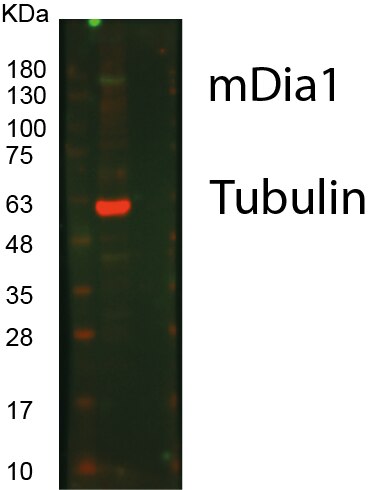 |
